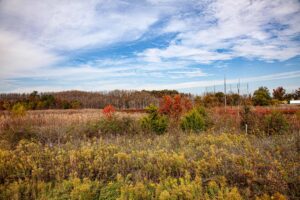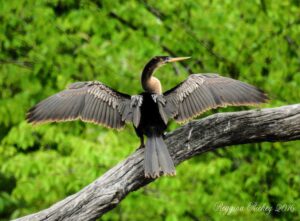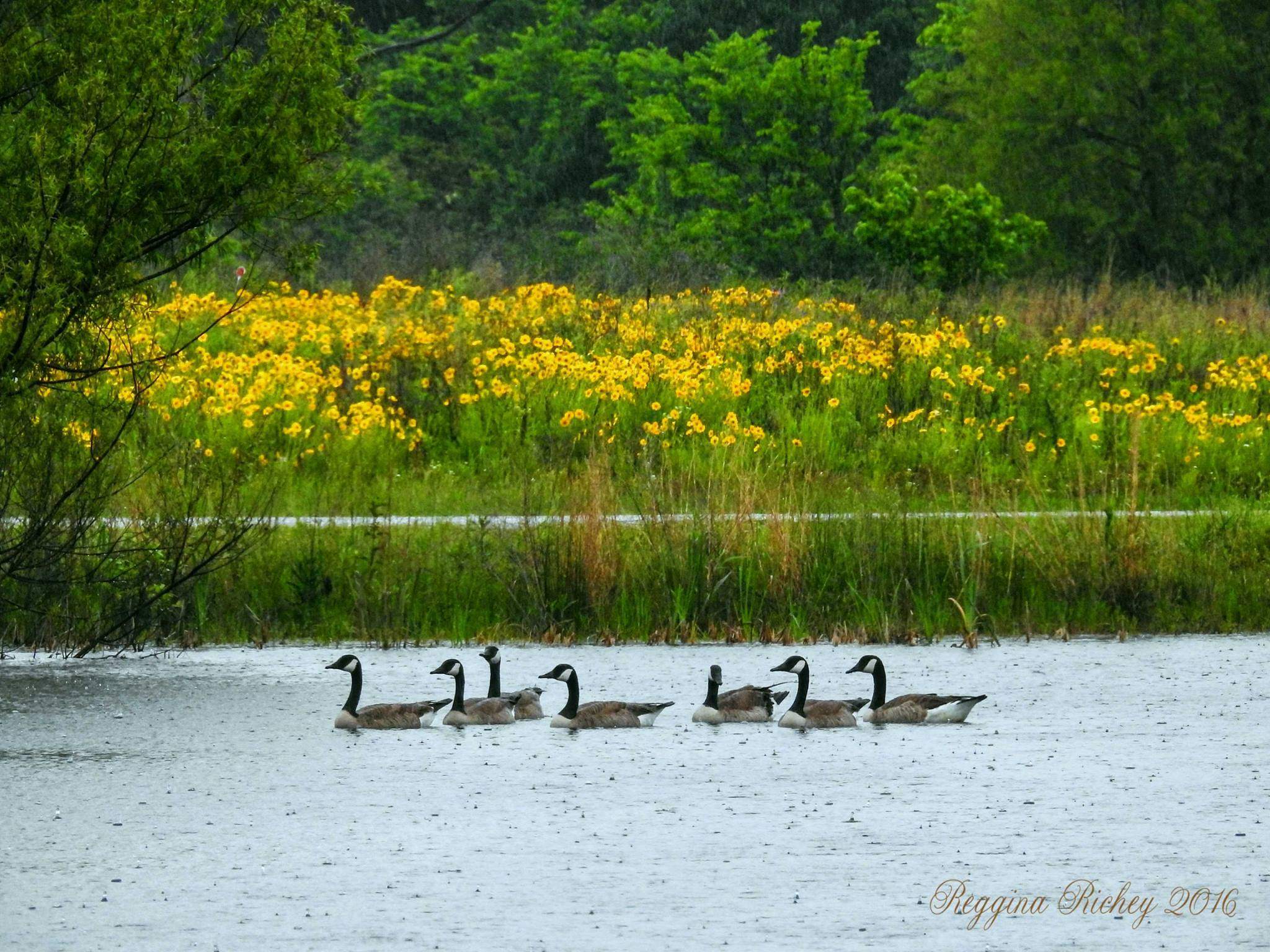Birding Anyone?
Photos by Regina Richey and courtesy Alabama Birding Trails
Limestone Park is a hidden gem for birds and residents alike.
With close to 1.2 miles (round trip) of gravel road for walking or driving access and 100 acres of locally rare habitats including one of the largest beaver marshes in the  area, a Water Tupelo Swamp, wet marsh, and open grasslands, Limestone Park is yet another one of Alabaster’s hidden treasures. It’s also home to the Alabaster RC Airplane Club, and Manna Ministries’ Manna Farms charity garden. Over 500 species of plants, animals, fish, reptiles, and insects have been recorded so far in the park with more being added. The park has another very important distinction. It is a bird mecca. Featured on the Alabama Birding Trails system, the park is excellent for wading birds, swamp and marsh birds, grassland species, and waterfowl in winter. Visitors will also find songbirds and shorebirds in migration.
area, a Water Tupelo Swamp, wet marsh, and open grasslands, Limestone Park is yet another one of Alabaster’s hidden treasures. It’s also home to the Alabaster RC Airplane Club, and Manna Ministries’ Manna Farms charity garden. Over 500 species of plants, animals, fish, reptiles, and insects have been recorded so far in the park with more being added. The park has another very important distinction. It is a bird mecca. Featured on the Alabama Birding Trails system, the park is excellent for wading birds, swamp and marsh birds, grassland species, and waterfowl in winter. Visitors will also find songbirds and shorebirds in migration.
Passing through the entrance gate from Highway 31, pause to look for songbirds in the copse of oak-hickory woods to the south. There is a low area to the right that often holds water during wet periods; search the ditch for Wilson’s snipe and Song Sparrows (fall to spring), small sandpipers and plovers in migration, and Common Yellowthroats (mostly spring to fall). This field and the open fields to the south fill up with clover in late spring, which attracts passing Bobolinks, Dickcissels, and Grasshopper Sparrows, among others. The power lines always have Eastern Bluebirds, Eastern Phoebes, and Mourning Doves on them, but from spring to fall watch for Eastern Kingbirds. Loggerhead Shrikes are seen here irregularly. In fall, American Kestrels appear in small numbers. Others to watch for are Anhinga (breeds here), and Bobolinks, Dickcissels, and Grasshopper Sparrows (late spring). A Roseate Spoonbill has been spotted here in summer.
 With fields on both sides of the gravel road, you’ll likely find Eastern Meadowlarks and a few Northern Bobwhites. The edge where the mowed grass meets the taller old-field grasses to the south and southwest is good for Field Sparrows, and Palm Warblers in fall and spring. Look and listen for Yellow-breasted Chats and even Prairie Warblers toward the rear of the old-field grasses.
With fields on both sides of the gravel road, you’ll likely find Eastern Meadowlarks and a few Northern Bobwhites. The edge where the mowed grass meets the taller old-field grasses to the south and southwest is good for Field Sparrows, and Palm Warblers in fall and spring. Look and listen for Yellow-breasted Chats and even Prairie Warblers toward the rear of the old-field grasses.
The City of Alabaster’s birding Observation Deck, built in part with a grant from Alabama Audubon, overlooks wetlands to the northwest. The mudflats and pools in this area host numerous herons, as well as Greater and Lesser Yellowlegs, Pectoral Sandpipers, and other migratory shorebirds during spring migration, as well as some ducks in winter and in migration. The snags in the plentiful dead trees are often occupied by Fish Crows, raptors, and herons. A Purple Martin colony is located in a mobile home park nearby, and these birds often fly over the park or perch on trees and wires here. In the center of the park, there is a pond where American Coots and Pied-billed Grebe are present much of the year (usually not during the breeding season), along with Killdeer on the banks and nearby grass. Other shorebirds and waders are seen in and around the pond from time to time too. A roughly mowed pathway leads from this road to the far northwestern corner of the park, where there is a good vantage point for scanning the seasonal pools and wetlands from another perspective. American Coots have been seen swimming in the chain of seasonal pools here along with Blue-winged Teal, and Red-winged Blackbirds.
Having a bird guide is always helpful:
Backyard Birds of Alabama Bird Identification Poster (ETSY)
Adventure Publications Birds of Alabama Field Guide (Amazon)
A Birder’s Guide to Alabama (Amazon)
Tips for beginning bird watchers
- You need a good pair of binoculars
- Pack a field guide (see above)
- Bring a camera
- Explore with birding apps
- Keep records of what you’ve seen
Limestone Park, City of Alabaster
2400 Hwy. 31 South
Alabaster
(205) 664-6800
Amenities: parking, trails
Hours: 6 A.M.-dusk
Fee: Free
The gate to the park is open from 6 a.m. to dusk, throughout the year. The gate is just past Saginaw Pipe and the entrance sign of a mobile home area. Keep an eye out for the park’s large, blue entrance sign.
For more birding trails visit: alabamabirdingtrails.com

